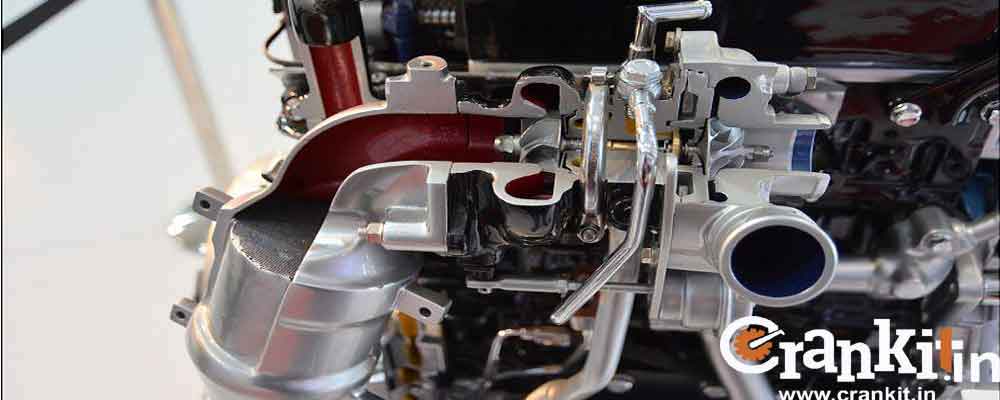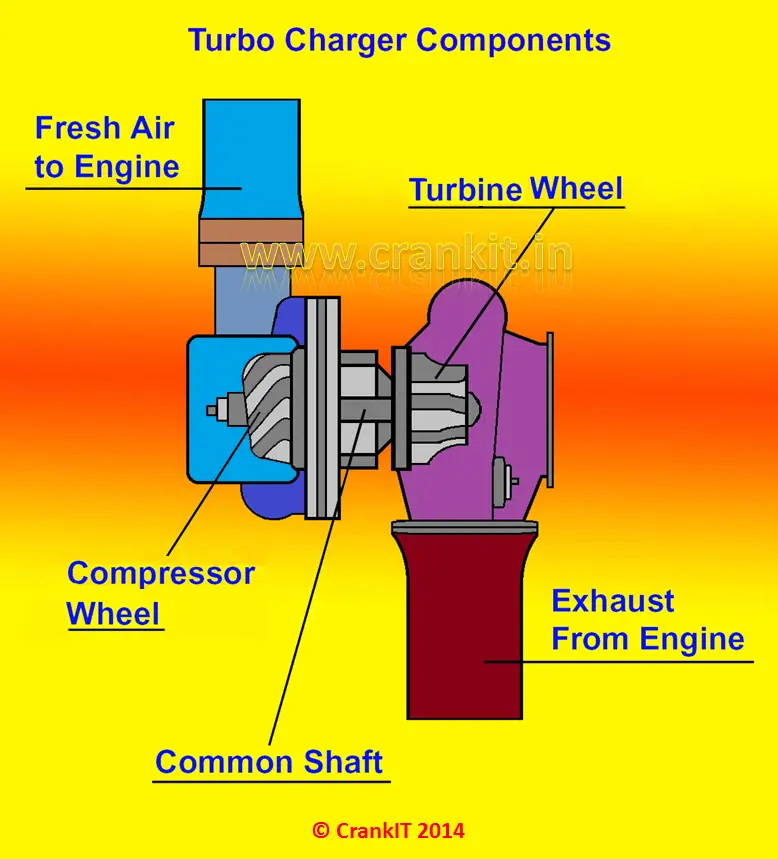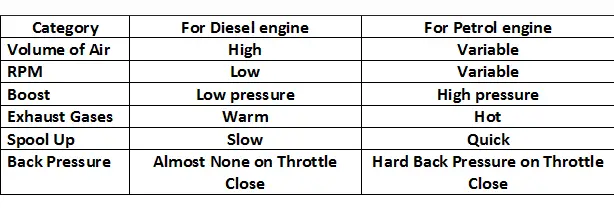Find Out How A Turbocharger Works?
A turbocharger is turbine-driven. It is a forced induction mechanical device. First, it compresses the incoming air. Then, it pumps the air into the engine cylinder at high pressure. Thus, it increases the engine’s efficiency and power output. It is about 30% to 40% more efficient than naturally aspirated engines.
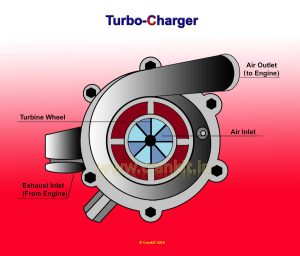
Furthermore, both Petrol and Diesel engines use turbo-chargers to enhance power. However, they considerably differ in critical areas. These include operating temperatures and combustion pressures. Besides, they differ in volume of air and operating RPM range. A Supercharger is a similar device that works on the same principle. However, it uses engine power.
Construction Details:
A turbo-charger mainly consists of two wheels. It has a turbine wheel and a compressor wheel. These wheels fit at the opposite ends on the same shaft. The outgoing exhaust gases rotate the turbine wheel while on their way out. Manufacturers fix the turbine to the shaft. It, in turn, rotates the shaft.
Furthermore, the compressor wheel fitted on the other end of the shaft also rotates with the shaft. And it acts as a suction fan. The rotating compressor wheel creates the suction of the incoming air. And then it pumps the air into the engine cylinders. In fact, a typical turbo-charger spins at very high speeds. This speed ranges from 30,000 to 1,25,000 RPM.
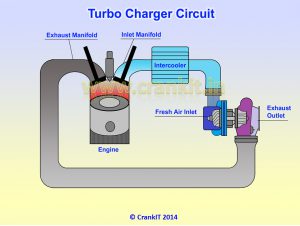
The compressor pumps up the fresh air into the cylinders above atmospheric pressure. Thus, it results in engine cylinders getting extra air. As the air volume grows, the system proportionately supplies the corresponding increased quantity of fuel to the engine. Thus, it increases power. In addition, when you compress the air, it heats up. Thus, the temperature of the air rises. Besides, it expands while reducing its density.
Hence, often, manufacturers use an Inter-Cooler or a ‘heat-exchanger.’ It cools the air before it enters the engine cylinders. Manufacturers refer to these as ‘Turbo-Charged Inter-Cooled,’ or ‘TCIC’ versions of those engines. Besides, manufacturers design & calibrate turbochargers according to different engine sizes & constructions. These include Direct Injection, In-Direct Injection, and Common Rail Direct Injection technologies in diesel engines. Also, they have MPFi and GDI systems in Petrol engines. Hence, you simply cannot directly interchange them.
Turbocharger Components:
1. A radial inflow Turbine Wheel
2. A Centrifugal Compressor
3. The Center hub/rotating assembly
4. Housing
Turbo-chargers Have Two Main Technologies:
1. Fixed Geometry
2. Variable Geometry
These days, modern diesel engines feature a turbo-charger with a Common Rail Direct Injection (CRDi) system that improves the performance of diesel engines. Furthermore, some advanced engine designs employ ‘Bi-Turbo’ or ‘Twin-turbo’ technology in a six/eight-cylinder engine for superlative engine performance. This design implements two separate units. They operate either in a sequential or parallel arrangement. For example, Volvo’s S80 T6 car has an engine that uses Twin-Turbo technology. BMW 7 Series’ 3.0-liter engine has advanced Triple-Turbo technology.
Advantages:
1. Higher power output
2. Improved power to weight ratio
3. Lower emissions
Difference Between Petrol & Diesel Turbocharger:
Bosch, Mahle, and Honeywell are some of the popular manufacturers of turbos in the world.
For more information, please click here.
Watch Turbocharger In Action Here:
Read More: Engine Horse Power>>
